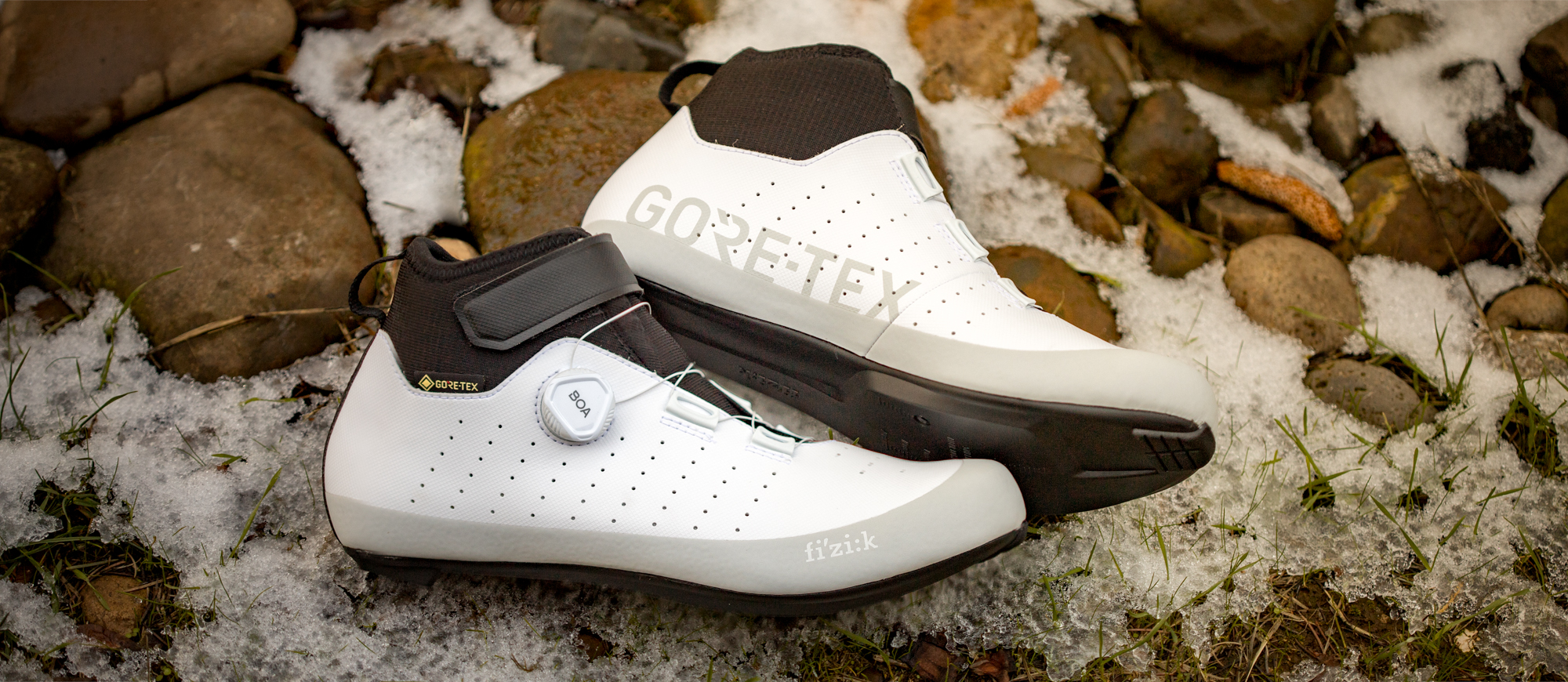Cyclingnews Verdict
The Fizik Artica GTX Tempo winter boots are a complete redesign of the previous Artica R5. The change brings better cold weather performance and better breathability but keeps the low bulk fit that sets Fizik winter boots apart from the competition.
Pros
- +
Quick to wipe clean
- +
Narrow external profile doesn’t rub the crank arm
- +
Fuzzy interior is comfy and effective at trapping warm air
- +
Uncomplicated entry and exit
- +
Cleat position is farther back than normal
- +
Nylon outsole better insulates against the cold
Cons
- -
Ankle is short making it difficult to seal against the rain
- -
White colour isn't suited to winter weather
You can trust Cyclingnews
One of the biggest challenges with cold weather cycling is keeping your hands and feet warm. Your hands need some dexterity reserved while also holding a position exposed to the weather. Keeping your feet warm might be the biggest challenge of all though. They are continually in motion but the connection to the pedal means they don't actually move. There's little flexing or muscle use and it doesn't take much to end a ride early because of painfully chilled toes. For many people finding the best winter cycling shoes opens up a whole new world of comfort in the winter.
If you are ready to stop trying to make summer shoes work in the winter, Fizik has a couple of solid options. Our current list has two entries from the brand but they are both disappearing. Going forward, the Fizik winter cycling shoe options include the Fizik Artica GTX Tempo and Fizik Artica GTX Terra winter boots. They are both the same design but offer a choice of cleat compatibility for either road or off-road. Although I spent time with both, I took the road-focused Fizik Artica GTX Tempo into the coldest weather we are likely to see this year and put them to the test. If you are looking for a serious upgrade to the comfort of your feet this winter, keep reading to see what works and what doesn't.
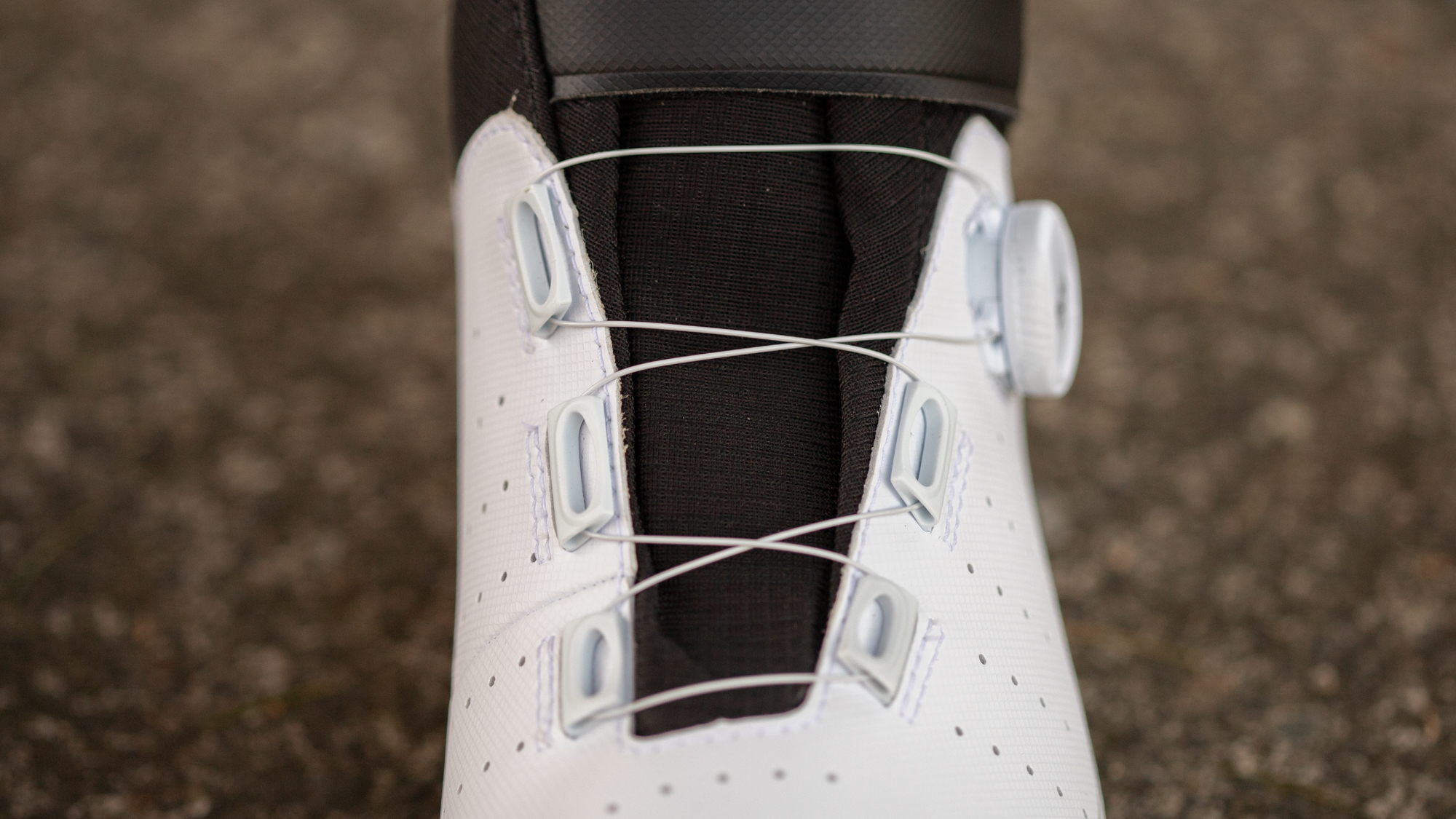
Design and aesthetics
Fizik has some wild colours available for two-bolt-compatible shoes but for the road-going options, they've stayed a bit more traditional. If three-bolt road cleats are your preference then you'll have an option of white or black colour in the Fizik Tempo Artica GTX. I spent time with the white version and even though white isn't going to be suitable for winter weather forever, they've held up well so far, even through winter dirt and grime, and wipe clean easily.
The whole lower portion of the shoe uses a hard-wearing polyurethane-coated outer. The very lowest portion also adds another rubberized coating for even more protection. Both are easy to wipe clean but aren’t the picture of breathability. To make it work, Fizik adds venting holes that cover the mid-section of both sides as well as the toe. Although that might seem like a bad idea for a winter boot, the PU coating is only the outer layer.
Sitting under the lower section, and visible in the tongue and ankle area, is a Gore-Tex membrane. Fizik refers to it as a Koala membrane but Gore themselves makes no reference to that as an off-the-shelf material choice. In reality, the particulars of the name are not super important. What's important is that the legendary Gore-Tex ePTFE membrane carries the "guaranteed to keep you dry" promise while remaining breathable when generating your own heat. It sits behind the lower section, meaning the holes in the outer coating only allow water vapour out. The upper portion of the shoes, where there's no PU coating, uses a ripstop outer with DWR coating.
What the Koala description likely refers to is actually the insulation in the Tempo Artica GTX. The majority of the body of the shoes is relatively thin. There is density at the ankle and in the centre of the tongue but for the most part, insulation comes in the form of a fleece inner. It's soft but not silky and it looks a lot like Koala fur. It's also unable to hold water, but does help create a space to trap warm air within the boot.

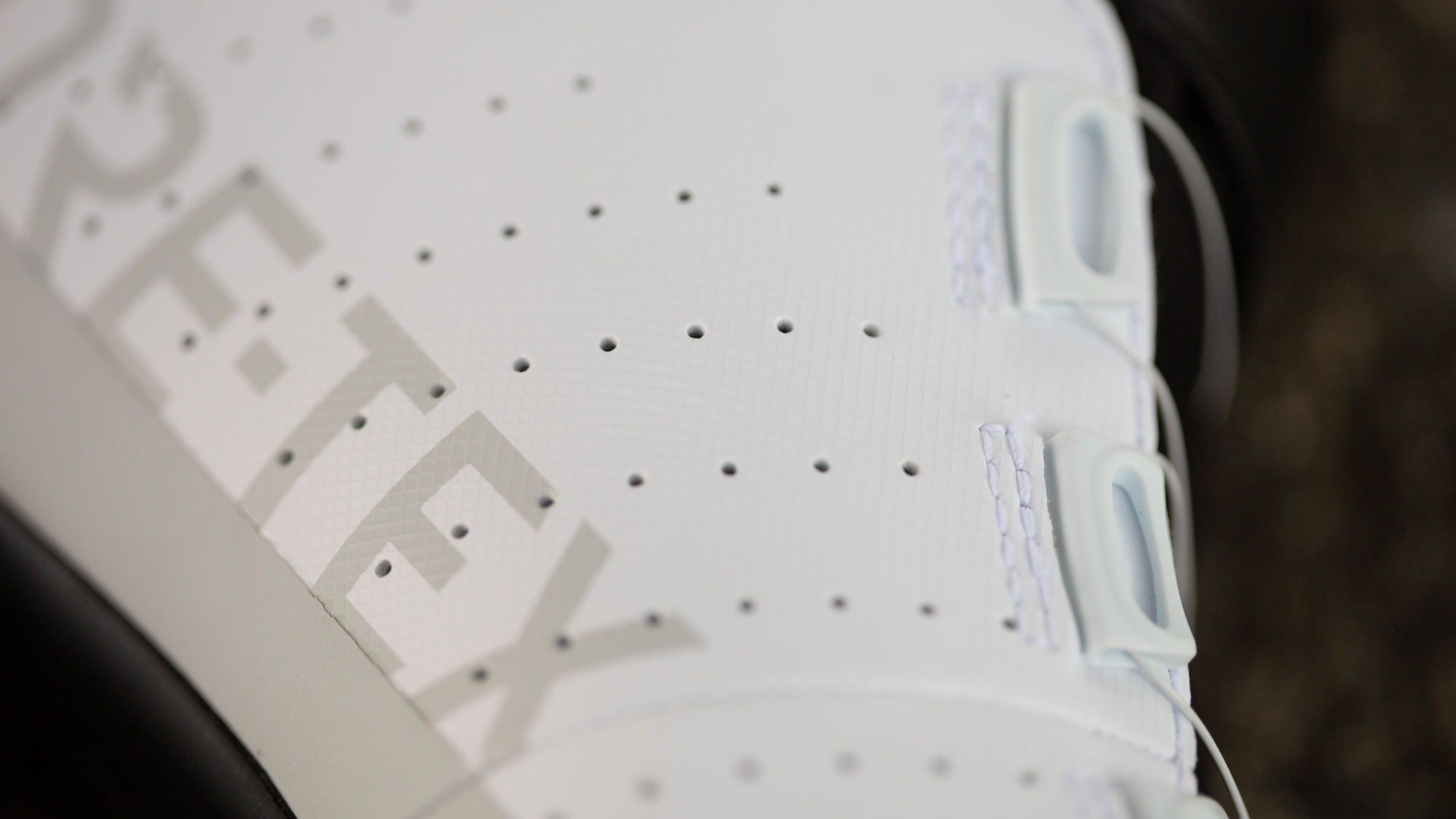
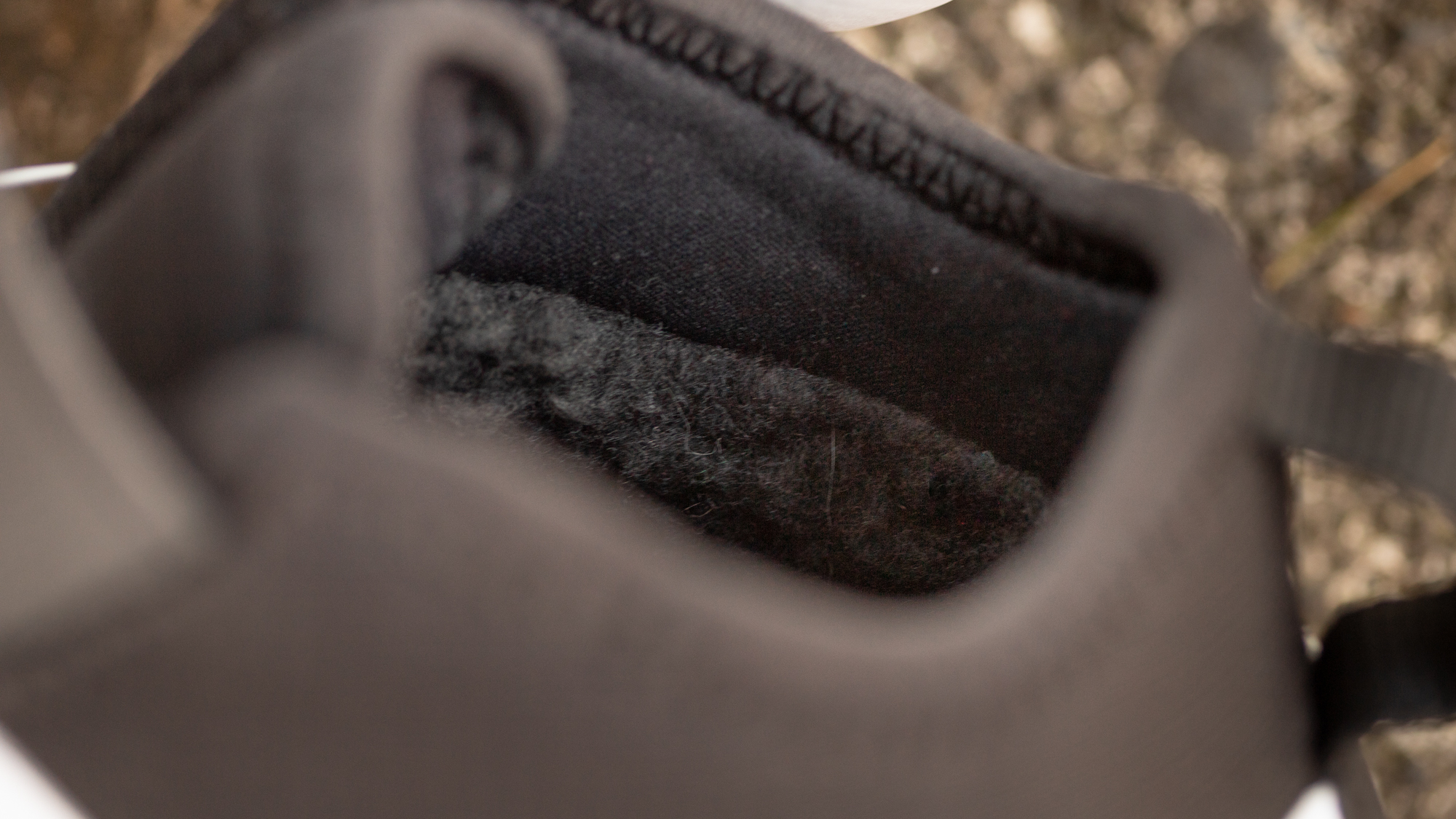
Tasked with handling closure on the Tempo Artica GTX is a combination of Boa and Velcro. The real adjustment for the boot comes from a single Boa L6, single direction and pop-to-release, dial located on the upper outside before the transition to the ankle. Including the dial itself, this Boa system threads through six points of engagement arranged along a slightly curved opening that angles towards the toe. Ending below the start of the ankle, the Boa system has no effect on the highest part of the boot. For that last section, you'll find a single Velcro strap.
The last part of the new Fizik boot design is an updated R5 outsole. Previously there was marketing copy calling it carbon-reinforced nylon but this time that's gone. In its place is only the nylon description but the actual shoe retains the fibre composite text. I wouldn't worry too much either way. What's more important is a bit of a change to the structure and reinforcement.
The previous winter boot emphasised stiffness at the forefoot. This time there's more structure heading toward the rear. The arrangement is reminiscent of the Giant Beam design found in the Surge Pro shoes, but Fizik gives it a mid-range 6 out of 10 stiffness rating. There's also been extra tread added at the toe and heel, presumably for added traction over winter landscapes, and the cleat holes have shifted farther back.
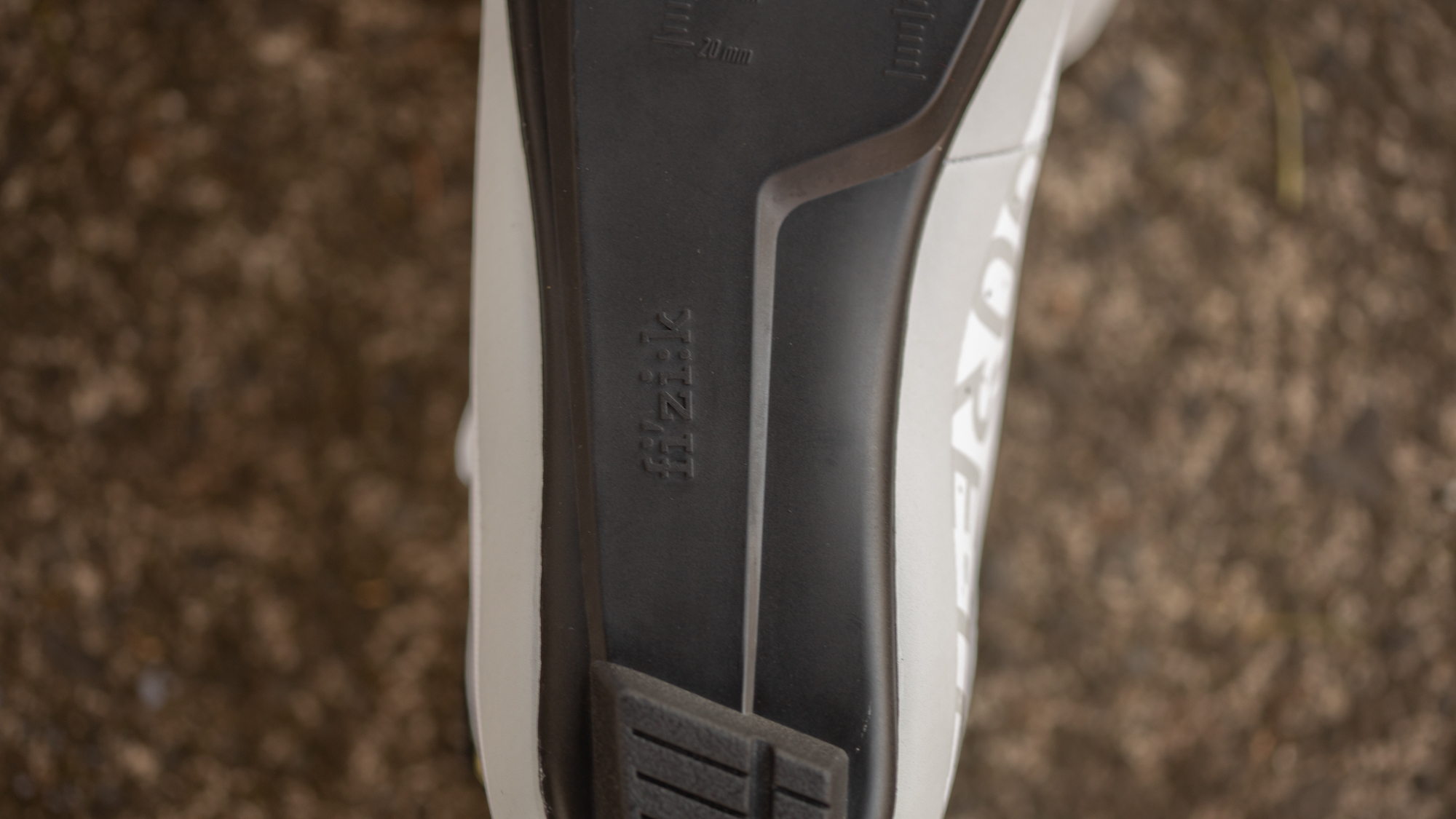
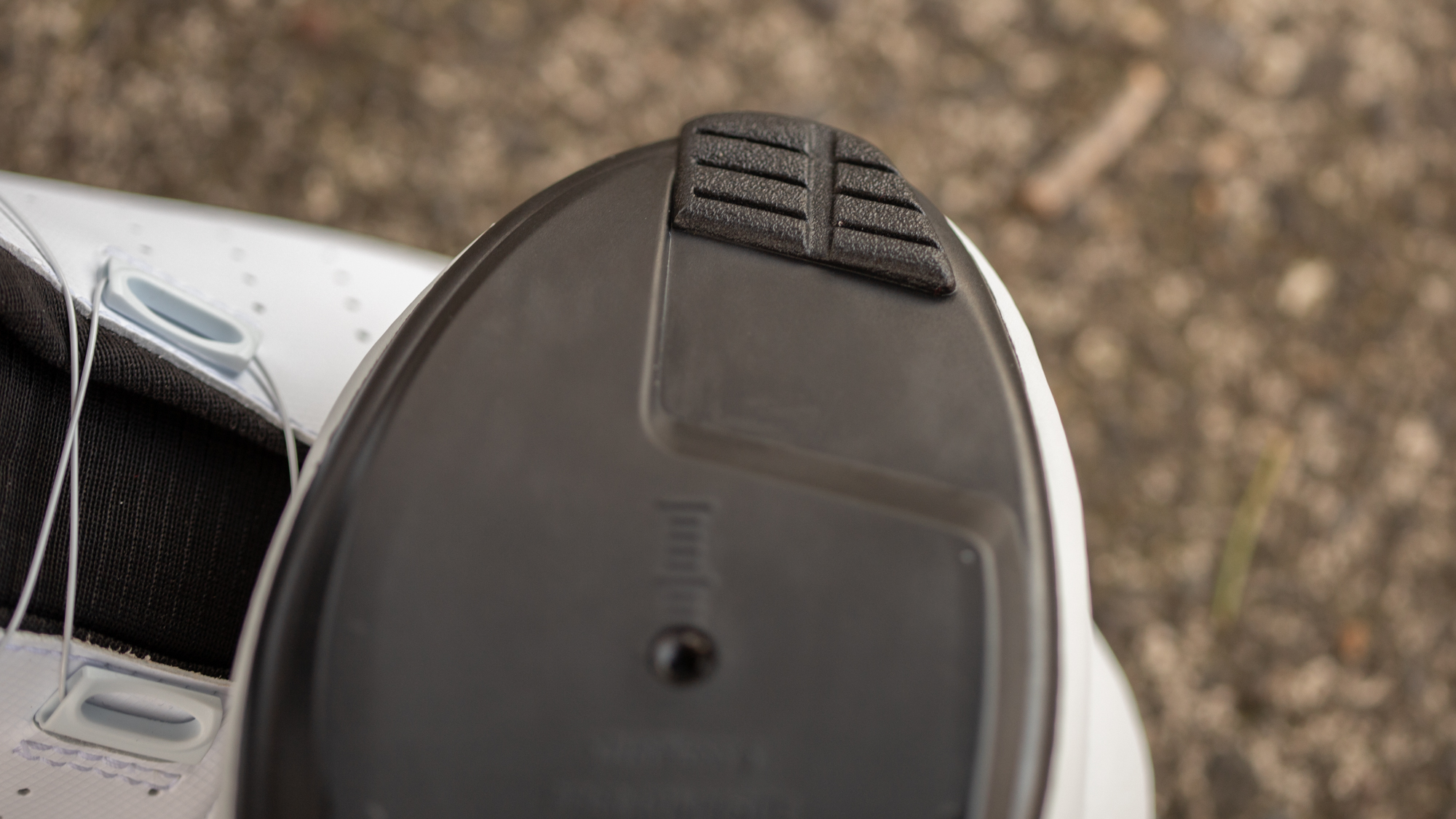
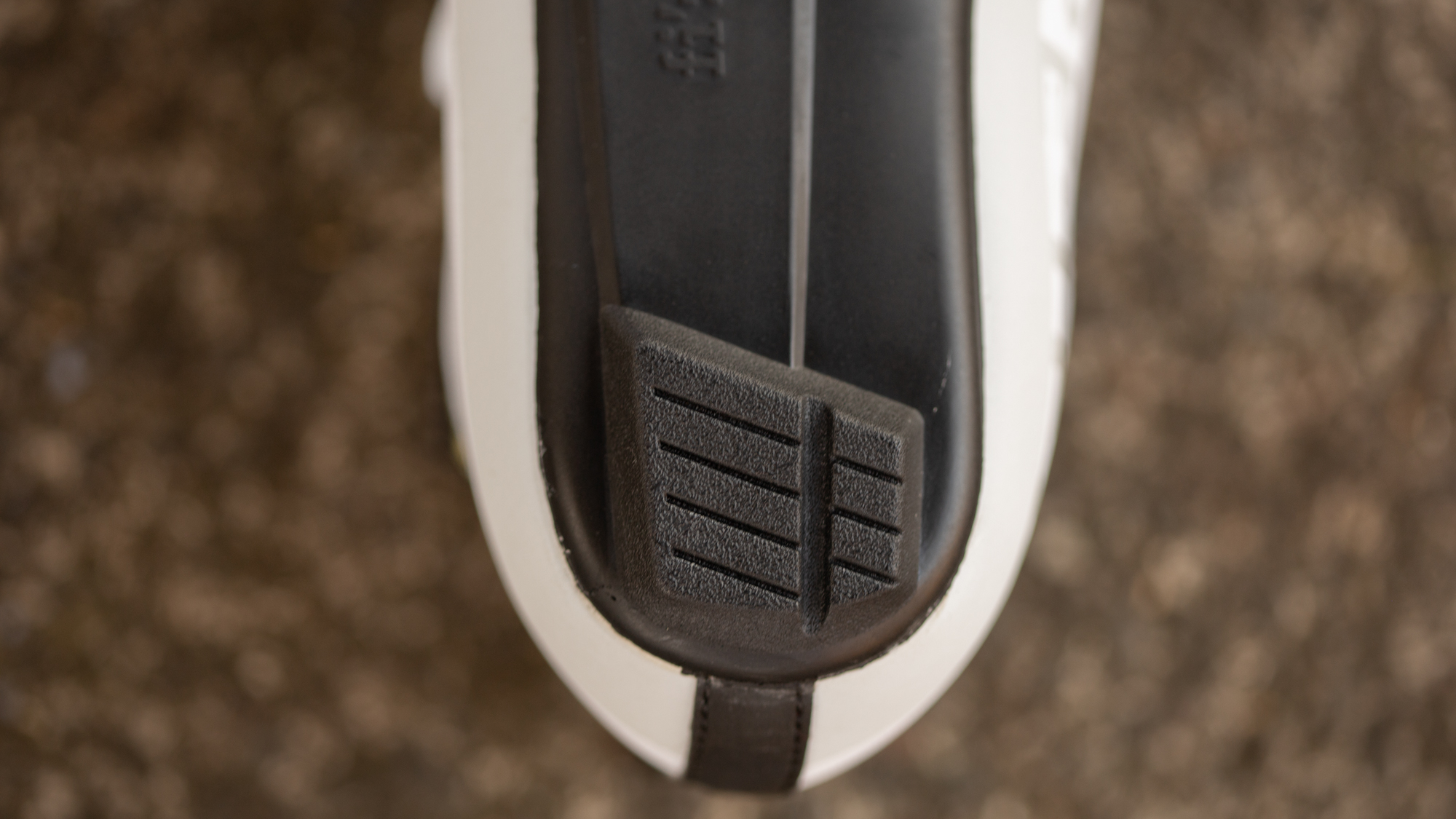
Performance
People ride bikes across the Arctic. It's not functionally impossible to ride a bike anywhere in the world but there is a distinct difference between above and below-freezing. If you live where it snows, winter riding is a different thing. Portland Oregon exists right on the edge of that temperature cliff. It rarely gets below freezing during the day and as such, rarely snows. That said, it will get very close and if it's not raining when that happens, you can expect wind. As it happens, I took the Fizik Artica GTX Tempo winter boots out and tested them in what is likely the worst weather Portland will see this year.
The first time I took them out was a short mid-week ride. It's an out-and-back path that's about 43km round trip and I've done it so many times I know every little bump. I knew it was going to rain but I figured how bad could a ride of less than two hours be? Turns out it was really bad. Just a bit above freezing and consistent rain that only got worse as the ride went on.
I'd love to tell you that these Fizik boots shrugged it off but I can't really say that. That's not to say they didn't, it's just more complicated. The previous design presented a sealed outer to the rain but Gore would argue that the Gore-Tex membrane is superior. In my experience, the membrane is far less important than the ability to keep water out of a pair of shoes.
The Artica GTX Tempo is as weather-sealed as the previous boots despite looking a lot more open. My first impression was that the tongue design would be an issue. There is a fold on either side that looks like it might collect rain. I can report that it doesn't present an issue. There are folds because it's continuous and there are no openings into the interior. The folds keep the water out and they also direct it to run towards the front without collecting.
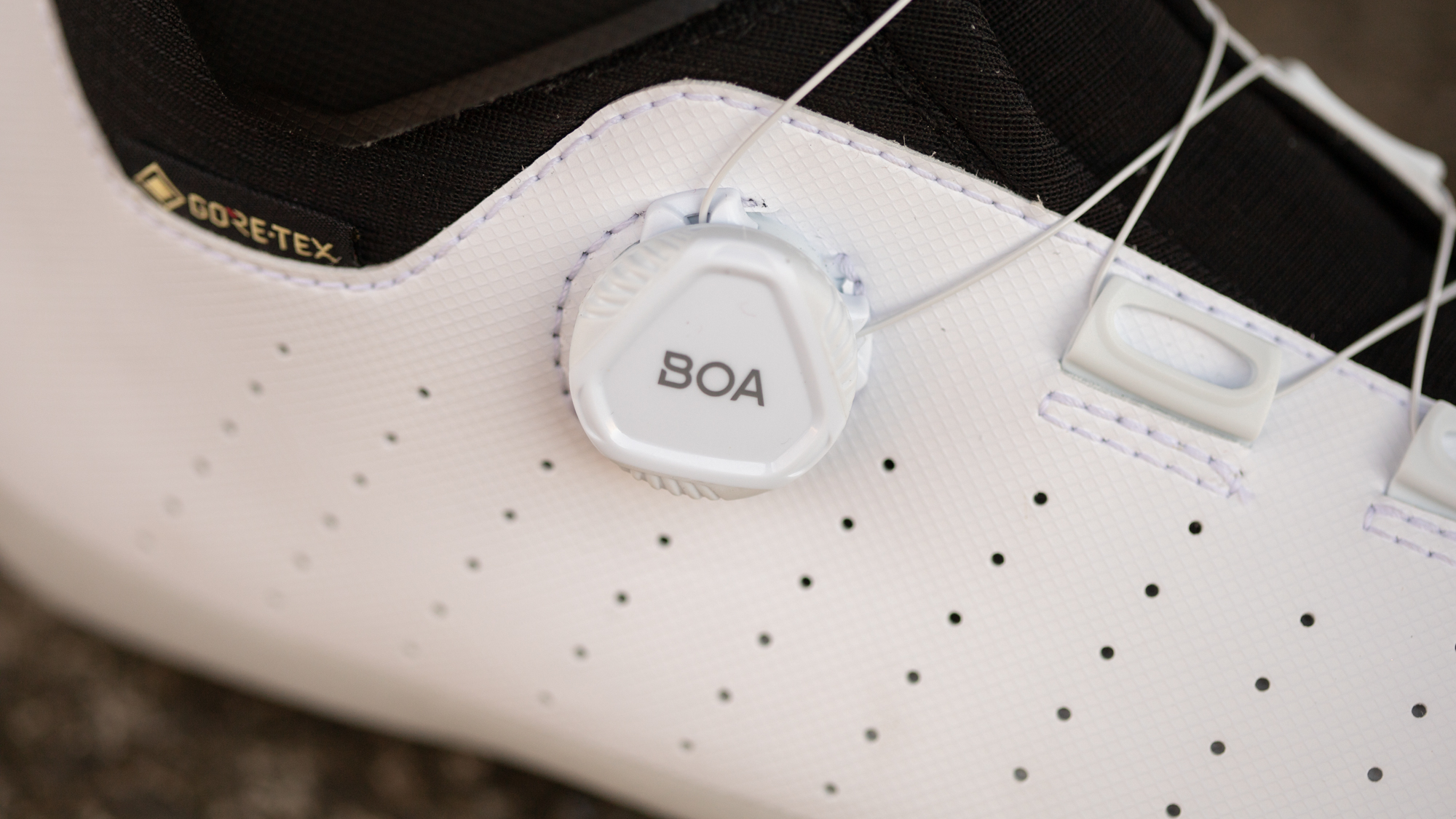
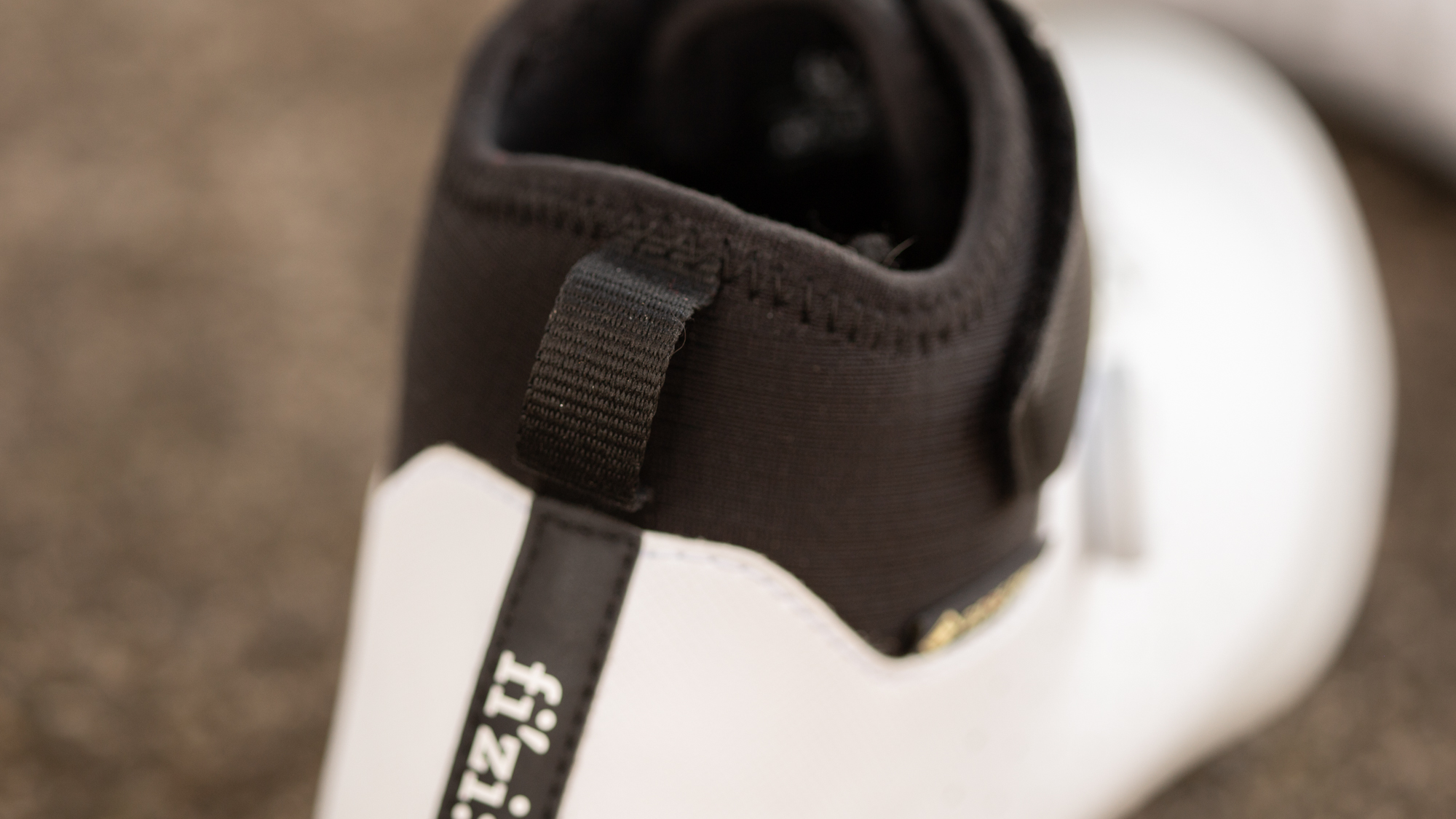
In this situation what is an issue, though solvable, is the upper design. The Fizik boots are overall very compact. While I’ve come to expect crank rubbing as a feature of riding with winter boots, I experienced none with these. Despite that, they do get a bit plump at the top and there's not much height. It's not super easy to seal rain out but Velotoze Waterproof cuffs, or a pair of waterproof over-pants or trousers, will solve this for you.
The next time I took these out, it was dry and clear. It was also just above freezing and it snowed the next day. This dry, cold, weather is actually where these Fizik boots did their best work. The interior feels like high-pile wool and it does a great job of keeping your feet warm. It also does a great job, in combination with the Gore-Tex membrane, maintaining breathability to keep your feet dry. You will want to be mindful of fitment though. I sized up half a size from my summer Fizik size and it was about perfect. If you want plenty of space for thick socks, go a full size up.
As in the previous section, I'm leaving the outsole for the end. They are largely forgettable. You can take that as a negative but I don't see it that way. They are stiff enough to cause no issues and far more about functionality. This is not a race shoe and it's not built as such plus nylon outsoles do a better job of insulating against the cold.
The most noticeable thing about the base is how far back you can get the cleat. This is a feature of other recent Fizik shoes and depending on your philosophy of bike fitting, it's a welcome addition. There's no sliding in the sole so you'll need to use the adjustment in the cleat if you prefer a more traditional placement. Personally, I'm a fan of getting my cleat back farther although it does exaggerate toe overlap.
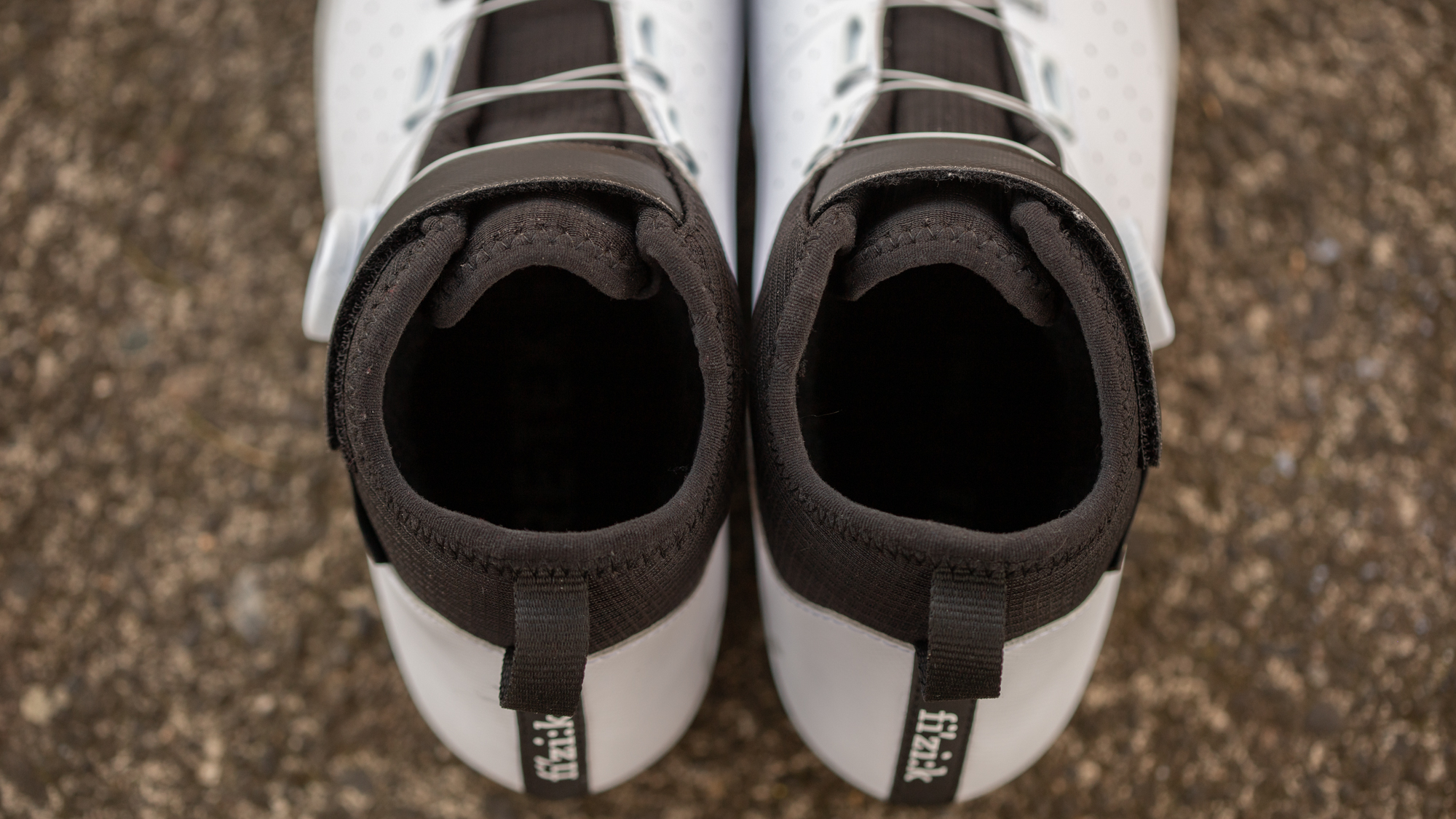

Verdict
I had been a fan of the previous Fizik winter boots design. Fizik gravel and winter boots are good at keeping the overall size and weight controlled and that hasn't changed. You can get more weather protection from something like the Lake CX146 but it will cost you an extra 122 grams and you can expect crank rub. Where the Fizik Artica GTX Tempo winter boots excel is with their low bulk design.
The other distinction you should make is about what kind of weather you are trying to handle. For the worst rain or snow, I wouldn't make these boots my first choice. They are capable but that's not the focus. The Fizik Artica GTX Tempo winter boots are the perfect choice for cold winter base miles when you don’t want to feel weighed down by gear.
| Design and aesthetics | Style on winter boots is tough to come by and these boots are a standout in that regard. I’d just like to see the ankle come up a bit higher. | 9/10 |
| Comfort | No hotspots and comfy interior | 10/10 |
| Performance | Protection from the elements is less than some but you gain a sleek profile and low weight in trade. | 7/10 |
| Weight | Given the protection these are lightweight boots. | 10/10 |
| Value | Despite the lack of a carbon sole, the pricing compares favourably to the competition and likely reflects the cost of Gore-Tex materials. | 8/10 |
| Overall | Row 5 - Cell 1 | 88% |
Tech Specs: Fizik Artica GTX Tempo
- Price: £179.59 (plus import duties) / $259.99 / €259
- Sizes: EU 36-48 (Half Sizes 38.5-46.5)
- Weight: 339g per shoe (Actual, size 43.5)
- Colours: white, black
Josh hails from the Pacific Northwest of the United States but would prefer riding through the desert than the rain. He will happily talk for hours about the minutiae of cycling tech but also has an understanding that most people just want things to work. He is a road cyclist at heart and doesn't care much if those roads are paved, dirt, or digital. Although he rarely races, if you ask him to ride from sunrise to sunset the answer will be yes. Height: 5'9" Weight: 140 lb. Rides: Salsa Warbird, Cannondale CAAD9, Enve Melee, Look 795 Blade RS, Priority Continuum Onyx
